Vikings
How the Vikings changed Kirklees
People from Scandinavia, Denmark and Norway had been trading with the people of Britain since the late eigth century, but from 865 AD, a large force of Vikings known to Saxon chroniclers as the 'Great Heathen Army' landed in England and attacked many Anglo-Saxon kingdoms.
Vikings first started to settle in Yorkshire in the 870s. They were mainly attracted to the fertile Vale of York, so Viking settlement was probably always sparse in the Huddersfield area.
No definite archaeological remains are known. We have to rely on place-names, which can preserve evidence for the language or name of the inhabitants, for example those ending in '-thorpe' or '-by' indicate Scandinavian settlement. This could be the case for 'Skelmanthorpe', 'Denby' and 'Sowerby'. Historians suggest the valley of the river Holme was an area of Viking settlement, where the invaders left a rich legacy of their language in place names and landscape features. Scholes was one of their settlements, the name coming from skali, also Wooldale from 'Ulf's dale'.
Carved stones and grave markers provide evidence of Anglo-Saxon and Viking trading of goods, ideas and belief systems. Finds of carving suggest that there was a major religious establishment at Dewsbury and Thornhill, and others at Kirkheaton, Kirkburton, High Hoyland and Cawthorne.
A number of towns expanded and flourished during the period of Viking control (while some Anglo-Saxon port-towns became less prosperous due to their raids). The best-understood example is at York, or Jorvik, as the Vikings called it, where extensive excavations have taken place around Coppergate. A burial of a Viking woman has also been found at Adwick-le-Street, Doncaster.
Despite there being such little tangible evidence of the Vikings in Kirklees, it is clear their trade, skills and religion were present in the lives of the local people.
What to expect in the box
Viking plates and bowls were usually made from wood. They ate using a sharp knife, which acted as both a knife and fork.
With no shops or supermarkets, the Vikings grew, hunted or caught everything they ate. In Britain, vegetables that could be grown included leeks, turnips and carrots. They would have gathered wild plums or crab apples.
The Vikings kept animals such as chickens and sheep. Meat, eggs, milk and cheese were produced by these animals. The Vikings also ate fish, such as herring and cod.
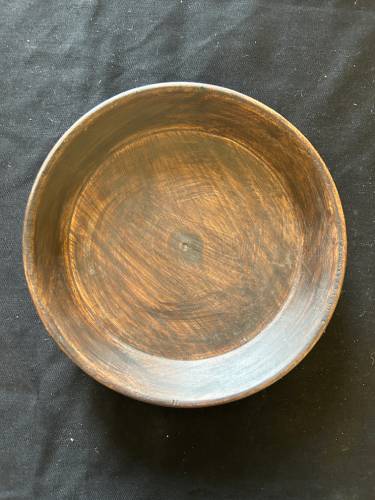
Viking beads were commonly made of glass or amber and were used for jewellery and trade.
Vikings used beads to make jewellery and it was a symbol of wealth and status.
They also used beads as trade items across their lands. Artisans moved with the Vikings from place to place, making beads in many locations, including Norway, Sweden, Denmark, Greenland, England, Gotland, Scotland, and Ireland.
The different styles and quality of beads from different regions and time periods can help show the extent of trade and migration during this period.
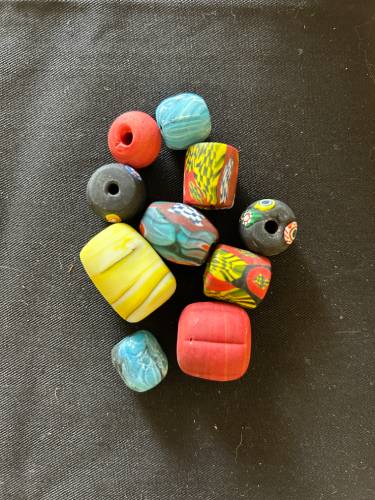
Vikings played a variety of games that involved dice and dice bowls, including board games and other games.
The games were often elaborate and reflected Viking culture and spirit, and required strategy, skill, and physical prowess.
Dice such as these would have been used to play games called tabula and kvatrutafl.
Dice were made of antler for the most part, although examples of bone, walrus ivory and jet are also known.
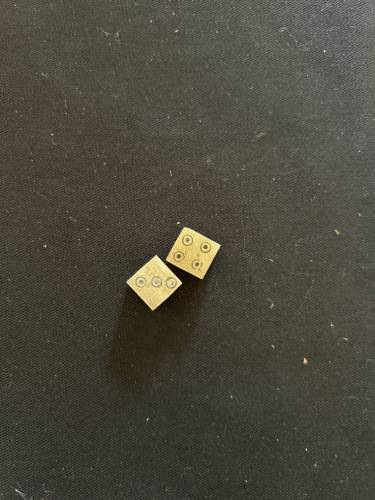
A few simple carved wooden toy horses have been found scattered across the geographical range of the Vikings.
These toys are very simplistic depictions of horses, with their head down as if to graze.
As these are such a simple design and made from smooth wood, they would have likely been made for very young children, and ideal as a teething toy.

Bone and antler were widely used in the Viking period, often for jobs for which we now use plastics.
Quite a lot of bone and antler objects have survived, partly because it was widely used, but also due to the fact that it generally survives well in the ground in most conditions.
Whistles would have been used for communication purposes, during battles or for calling animals. They could also be used as a musical instrument.

Viking drinking horns were ceremonial vessels that were used for at least 2,600 years and were a prominent part of Viking culture.
They were often made from the horns of cattle, goats, or other animals, and were sometimes mounted with metal.
The horns were practical and could reflect the wealth and status of their owner. Vikings used them at nearly every festival and celebration, as well as in everyday situations.
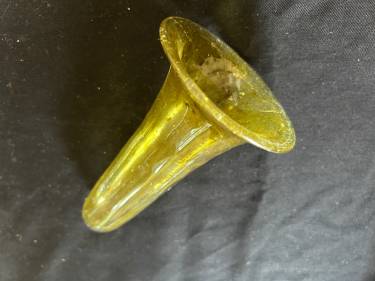
A flagon is a large container, typically made of metal, ceramic, or glass, with a handle, spout, and often a lid.
They would be used for serving drinks, and its design is geared towards communal sharing, making it a staple in gatherings and ceremonies.
The Vikings drank many different beverages, including beer, mead, wine, water and milk.
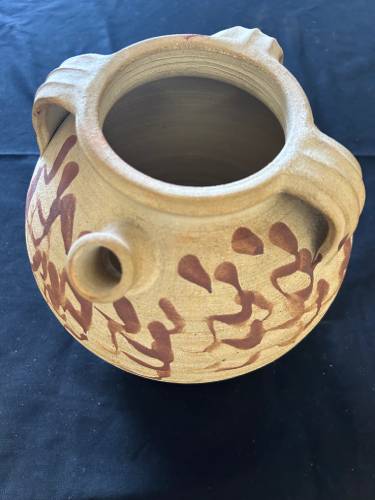
Vikings were known for being very clean and were more hygienic than most Europeans of their time. They valued their appearance and spent a lot of time and money on grooming and cleanliness.
They believed that daily grooming and cleanliness were signs of self-respect and honor, and that dressing well would help them avoid embarrassment in the afterlife.
Vikings used animal bone tools like combs, razors, and ear cleaners. They combed their hair, beards, and mustaches, and trimmed their beards into tidy shapes.
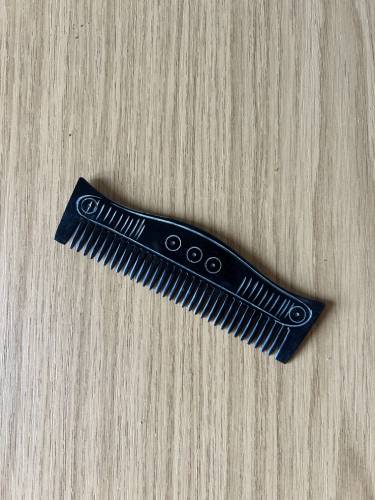
Hnefatafl, also known as Viking chess or Tafel, was a popular strategy game played by the Vikings and other Northern European cultures from around 400 AD until the 18th century.
The game's name translates from Old Norse to "fist table" or "king's board", and it was a significant part of Viking culture.
The pieces were often made from wood, bone, or glass, and the design and craftsmanship of the boards and pieces indicated the game's important status in Viking society.
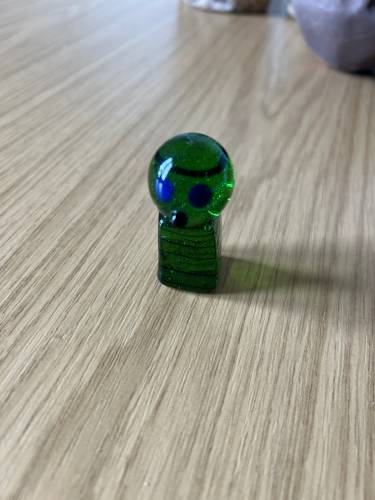
During the Viking Age in northern Europe, Vikings used a variety of forms of currency, including coins, ingots, and hacksilver.
The Vikings' primary coin was the silver penningar (penny), but they also used gold coins, which were less common but represented wealth and status.
The purity of the metals varied, and some coins were alloyed with other metals to increase production. Because coins were valued by their weight, people could cut coins into smaller amounts to get the exact weight they needed.
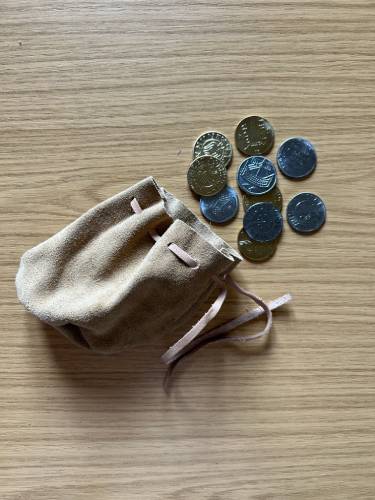
Amber is fossilized tree resin that can be millions of years old. The world's largest amber deposits are found in the Baltic Sea region, where it has been harvested for thousands of years. Raw amber can sometimes be found on beaches around Eastern England, but the amount of amber objects found at Viking sites like York and Dublin suggests that the Vikings imported large quantities from the Baltic.
Amber was a treasured material to the Vikings. The Vikings used amber to make beads, pendants, brooches, and Thor's hammers. Women may have worn strings of amber beads between the brooches that fastened their dresses.
The Vikings collected amber from the Baltic Sea region and traded it across Europe. They used amber to trade for goods like wheat, wool, honey, tin, salt, wine, silk, silver, and spices.
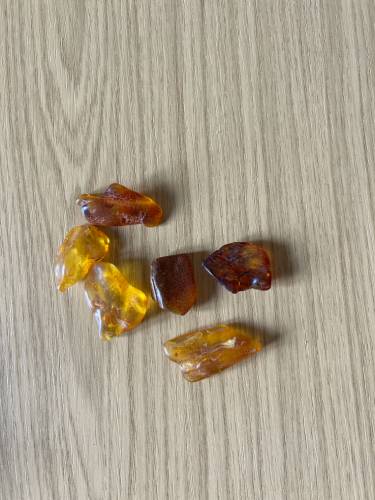
During medieval times, ear hygiene was considered crucial for good health. The Viking ear cleaner emerged as an essential tool in maintaining ear cleanliness. The ear pick/cleaner was crafted from materials such as bone, metal, or even precious metals like silver or gold. Its design was simple yet effective, with a slender handle and a loop or scoop-shaped end for removing earwax and debris.
Regular use of the Viking ear pick/cleaner helped prevent ear infections and hearing problems. Earwax buildup was a common issue, and by gently removing it with the ear pick/cleaner, individuals could maintain clear ear canals and prevent infections. This preventive measure was particularly important in a time when medical knowledge was limited, and infections could lead to severe complications.
They are very common finds on Viking Age sites, suggesting that people took this aspect of personal hygiene very seriously.
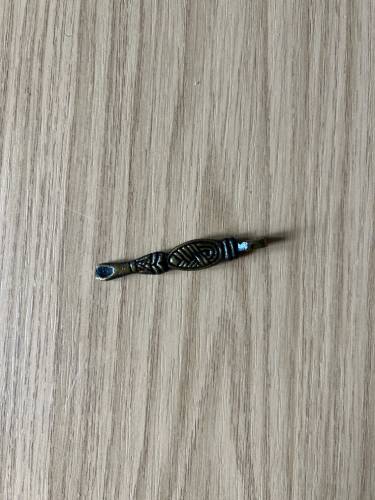
In the 900s, Vikings began to convert to Christianity, partly due to trade with Christian areas of Europe and political pressure from the continent. By 1050, most Vikings were Christian, and were baptized, attended church, and were buried in a Christian manner.
Vikings used bones for many purposes, including making tools, weapons, and decorative items. This cross would have probably been worn as jewellery.
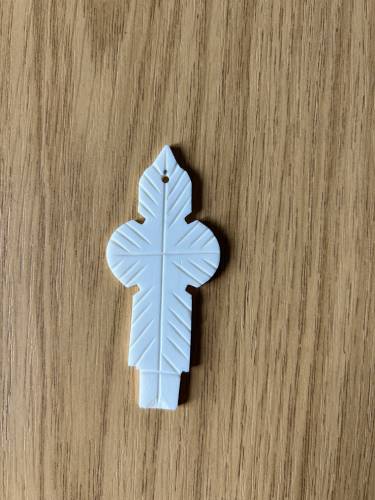
The Vikings needed all the energy that they could get in the form of fat - especially in winter. Meat, fish, vegetables, cereals and milk products were all an important part of their diet.
Sweet food was consumed in the form of berries, fruit and honey. In England the Vikings were often described as gluttonous (greedy).
Vikings used knives, spoons, and their fingers as cutlery, but they didn't have forks. Their knives were all-purpose tools that they used for cutting, carving, and eating, and they also served as forks at the table.
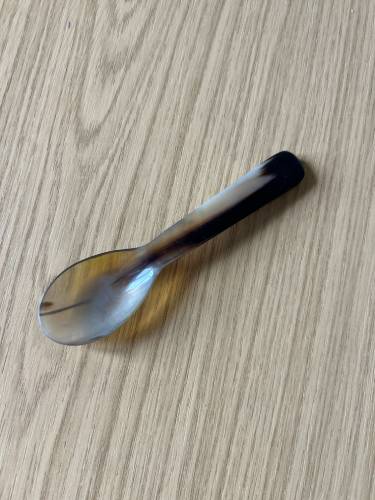
Explore the following themes using the objects
- Childhood
- Manufacturing
- Diet
- Leisure
- Hygiene
- Beliefs




